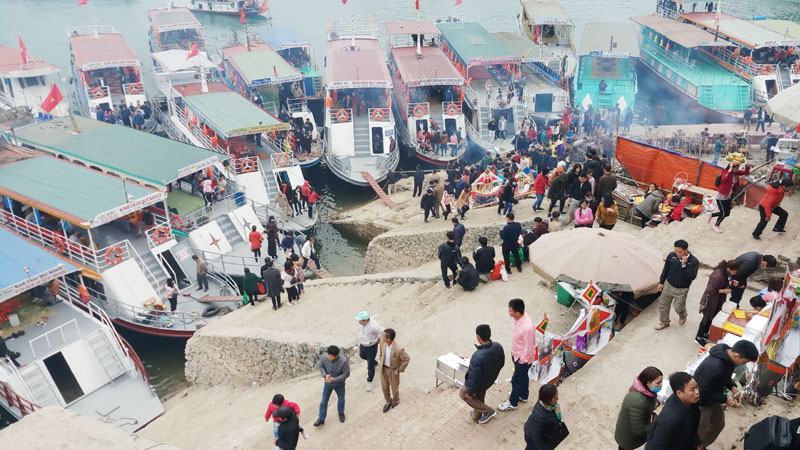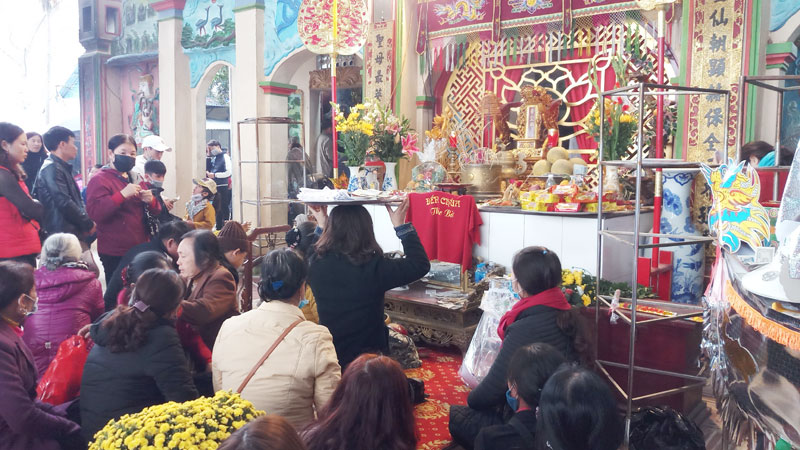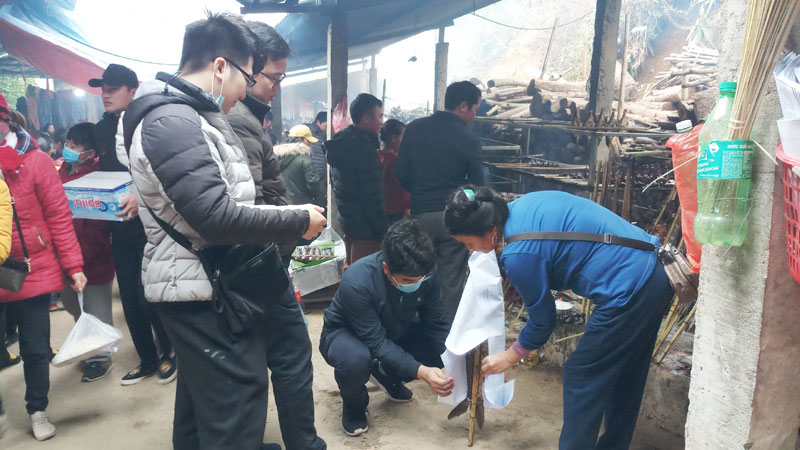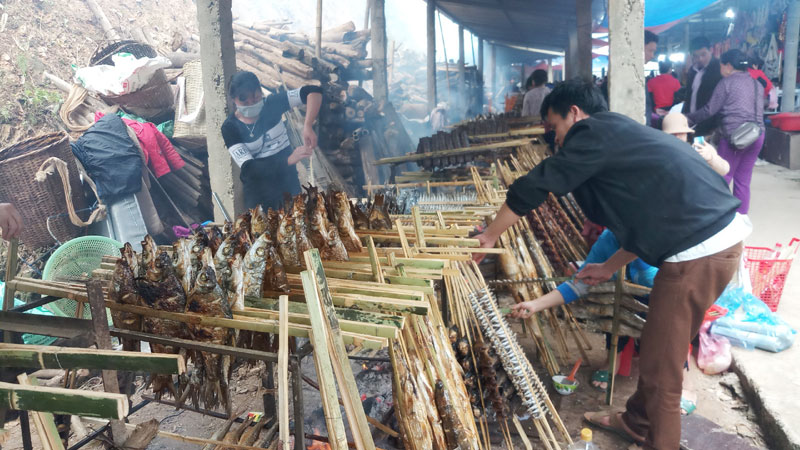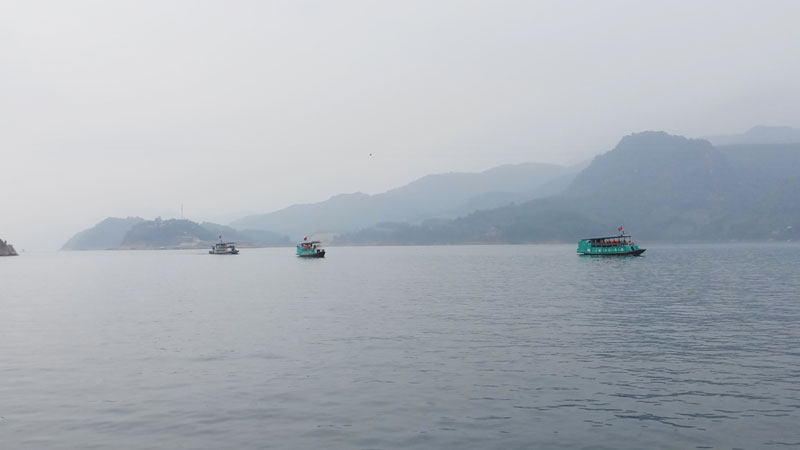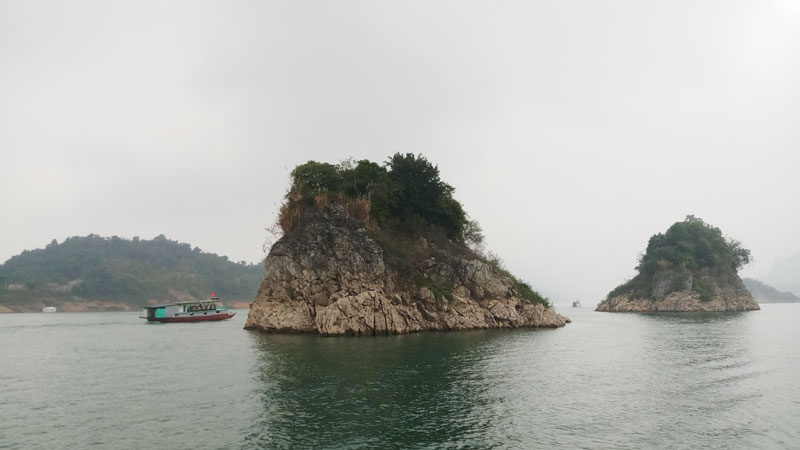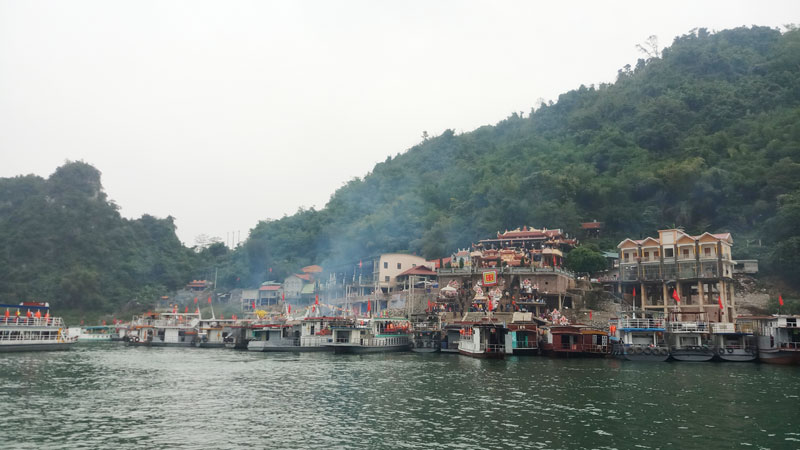
(HBO) – With the poetic beauty described as a miniature Ha Long Bay, Hoa Binh Lake and the relic site of Bo Temple in Thung Nai commune (Cao Phong district) and Vay Nua commune (Da Bac district) offer visitors a chance to be engulfed in nature with countless islets on the vast lake.
On the banks of this lake, there are villages of Muong and
Dao people where the traditional cultural identities of the ethnic groups are
still preserved today. Particularly, since the Prime Minister approved the
building of Hoa Binh Lake into a national tourist site, the place has received
investment to become an ecological and spiritual tourism area that has proved
increasingly attractive to travellers. Among destinations in this area, Bo
Temple stands out amid the grandeur landscape.
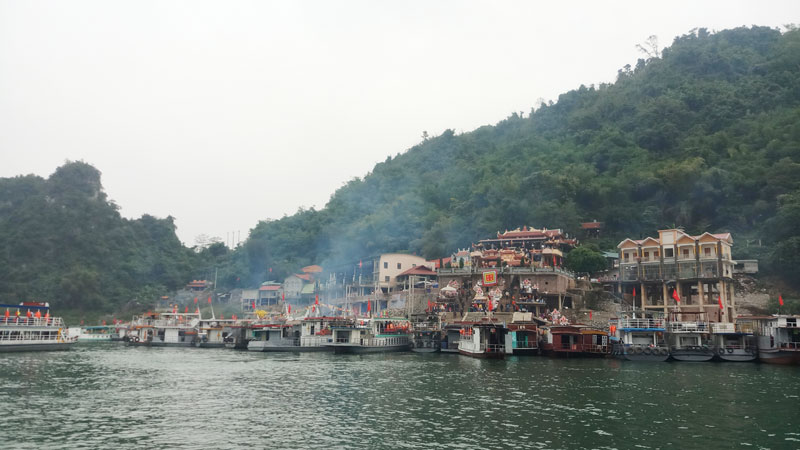
Bo Temple stands out amid the grandeur landscape.
In the spring, Bo Temple welcomes thousands of
visitors each day.
People pray for wealth, health and safety in the New
Year.
Grilled fish of the Da River is a famous delicacy that
every visitor to Bo Temple wants to taste and buy.
.
Boats carry visitors on sightseeing tours of the lake.
Thanks to its beauty, Hoa Binh Lake is described as a
miniature Ha Long Bay.
Bo Temple, also known as the Temple of the Lord
of Bo Waterfall, is associated with the story about King Le Loi’s trip to put
down a revolt in the spring of 1431. Legend has it that when the king’s troops
arrived in the Bo Waterfall area, they received support from locals, including
Dinh Thi Van – a Muong ethnic woman in the land which is now Vay Nua commune.
She called on other people to donate food to the troops and took them by boat to
quell the rebellion. Due to her great contributions, after Van passed away,
King Le Loi ordered locals to build a temple dedicated to her in the Bo
Waterfall area, and it has become a popular place of worship of local
residents. Bo Temple comprises Trinh and Chau temples and features 38 statues
of all sizes.
Every year, the Bo Temple festival lasts from
the second day of the first lunar month through the third lunar month. Thanks
to the imposing landscape and the temple’s sacredness, the site welcomes
thousands of visitors coming from far and wide each day in the spring to pray
for health, safety and happiness for each family and peace and tranquility of
soul in the New Year./.
Located just a 20-minute drive from Hoa Binh City, Ora Hill Farmstay & Glamping Hoa Binh is a captivating new destination nestled in Mo hamlet, Bình Thanh commune, Cao Phong district. Combining farming with leisure, this tranquil retreat is perfect for those seeking balance, joy, and an immersive experience in the expansive beauty of nature.
Muong Bi - Tan Lac is renowned as one of the four famous Muong regions in Hoa Binh province. Blessed by nature with a favourable climate and stunning landscapes, Tan Lac holds great advantages for tourism development. The local tourism industry has made remarkable strides in recent times thanks to the attention and support from the local authorities and sectors.
With its strategic location, well-developed transport network, and diverse soil and climatic conditions, Hoa Binh is emerging as a must-visit destination in Vietnam's northwestern tourism corridor. The province boasts numerous attractions, including the Kim Boi hot springs (Kim Boi district), the Dau Rong cave complex (Cao Phong), the Mai Chau valley (Mai Chau), and the iconic Hoa Binh hydropower plant.
The northern mountainous province of Hoa Binh has been listed among the 71 most beautiful places to visit worldwide by the prestigious US travel magazine Condé Nast Traveller.
Hoa Binh province’s rich natural and cultural resources position it as a prime location for developing community-based tourism (CBT). In recent years, support from central and provincial policies, as well as assistance from non-governmental organisations, have encouraged local ethnic minority and mountainous communities to actively engage in the sector.




